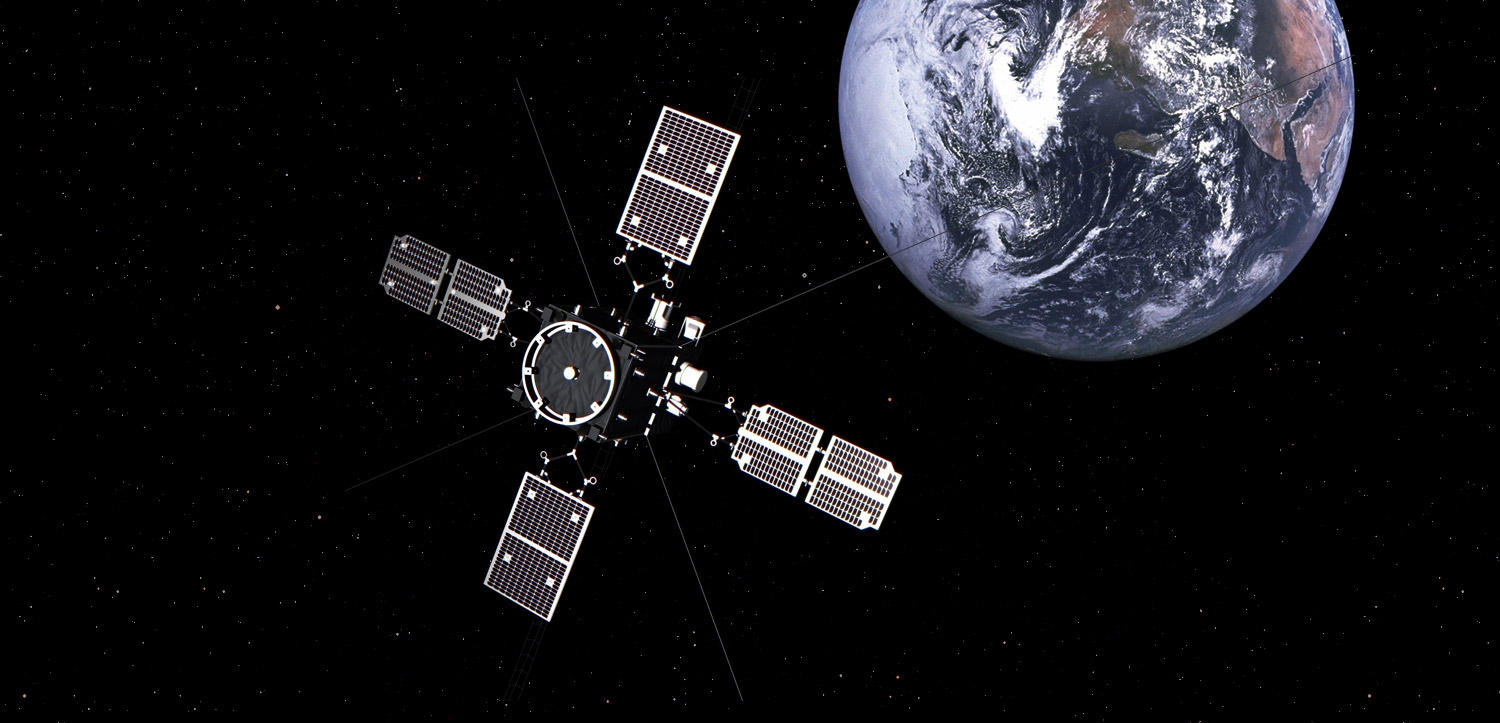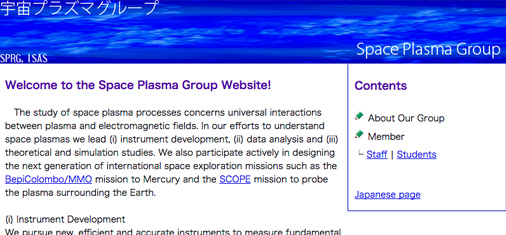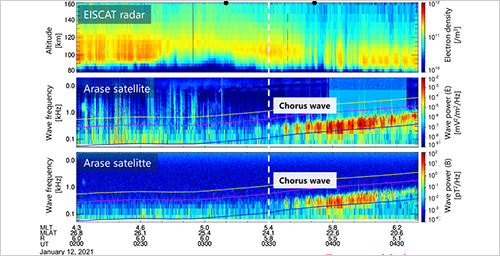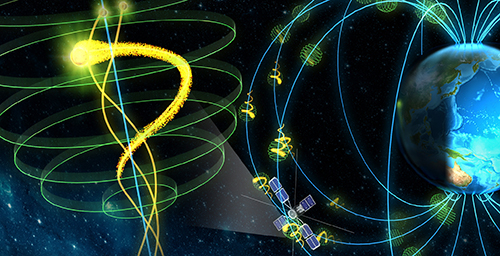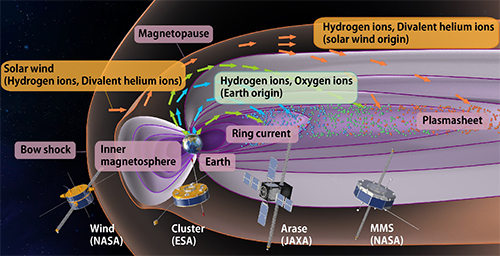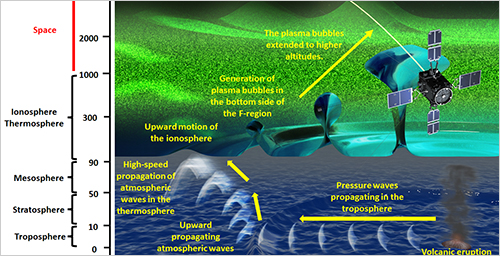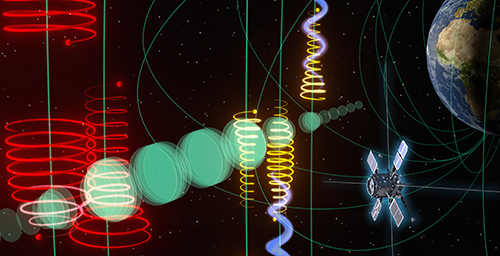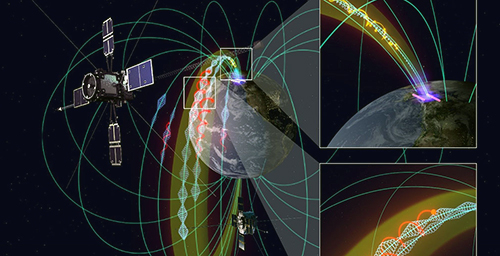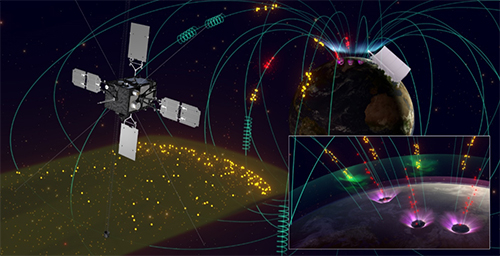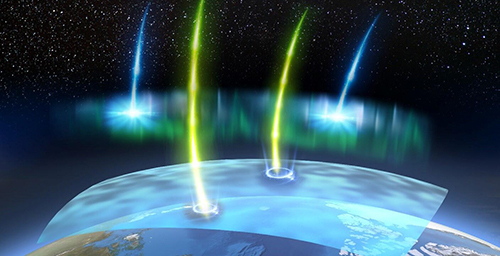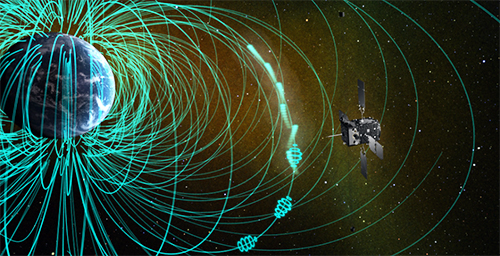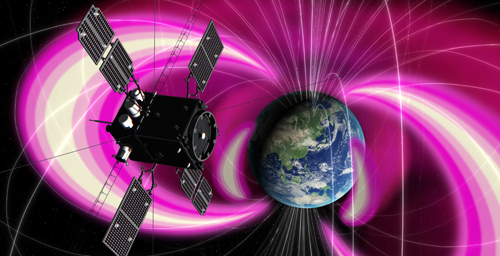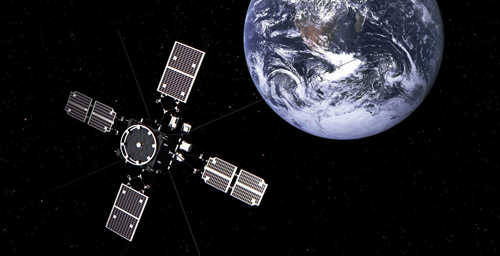This probe is designed for the direct observation of the process by which the high energy electrons that exist in the Van Allen belt are generated. The probe will observe the process that generate this high energy in the middle of the radiation belt in order to examine how storms develop in space and how particles are generated along with the storms that occur in space due to the disturbances of the solar winds.
In Geospace, the portion of outer space close to the Earth, there exists a band of radiation full of high energy electrons which exceeds a mega-electron volt in voltage and which is called the Van Allen belt. However, since the discovery of the Van Allen belt in 1958 no one has managed to solve the riddle of why these high energy electrons and the radiation belt itself are generated.
The Arase Geospace probe (an ERG satellite) will attempt to observe for the first time the process by which high levels of energy are created in the middle of the radiation belt in order to clarify how storms in outer space develop and how high energy particles are generated through storms in outer space occurring from disturbances from the solar winds.
The probe is equipped with nine instruments of observation and analysis to observe the high energy particles and it will attempt to tackle the mysteries of the radiation belt.
| Name | Exploration of energization and Radiation in Geospace "ARASE" (ERG) |
|---|---|
| International Designation code | 2016-080A |
| Launch Date | 20:00, December 20, 2016 (JST) |
| Launch Location | Uchinoura Space Center (USC) |
| Launch Vehicle | Epsilon-2 |
| Weight | about 350kg |
| Orbital Altitude | Perigee: about 440 km, Apogee: about 32,000 km |
| Orbital Inclinarion | about 32° |
| Type of Orbit | Elliptical orbit |
| Orbit Period | about 570 min. |
| Satellite bus | SPRINT bus |
| Major Scientific Instruments | ・Low-energy particle experiments - electron analyzer (LEP-e) ・Low-energy particle experiments - ion mass analyzer (LEP-i) ・Medium-energy particle experiments - electron analyzer (MEP-e) ・Medium-energy particle experiments - ion mass analyzer (MEP-i) ・High-energy electron experiments (HEP) ・Extremely high-energy electron experiments (XEP) ・Magnetic field experiment (MGF) ・Plasma Wave Experiment (PWE) ・Software-type wave particle interaction analyzer (S-WPIA) |

